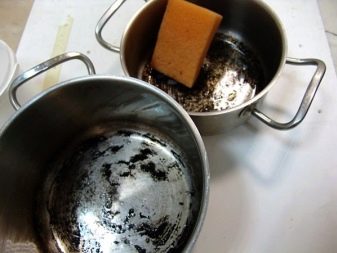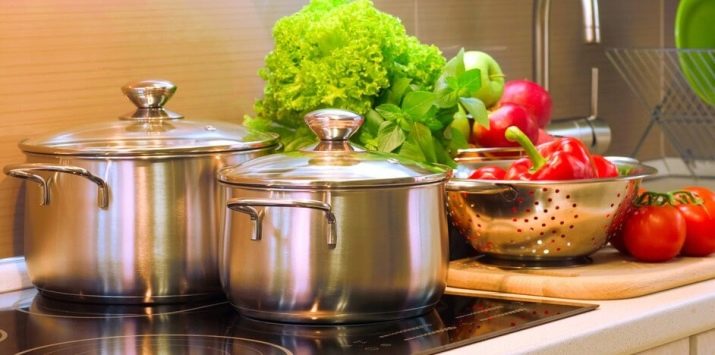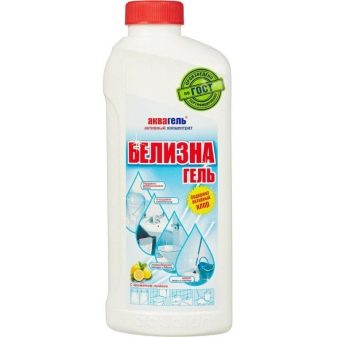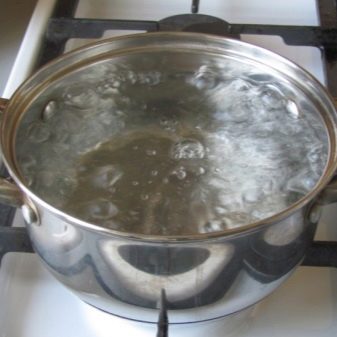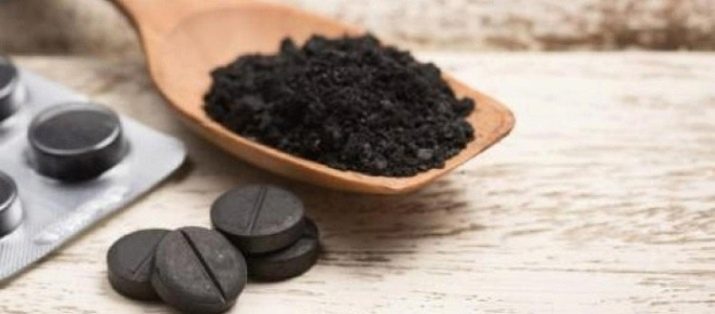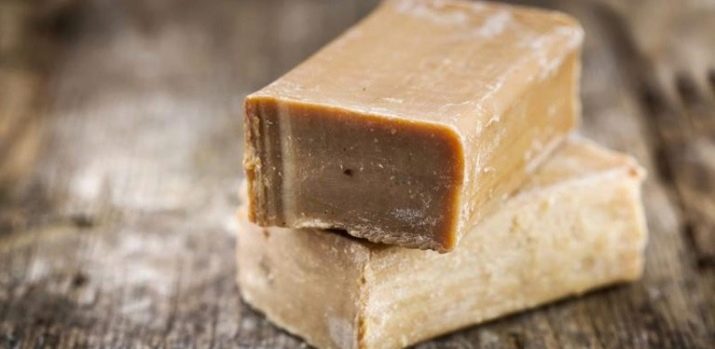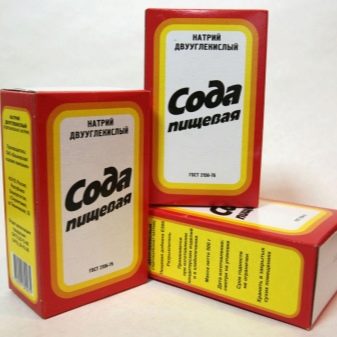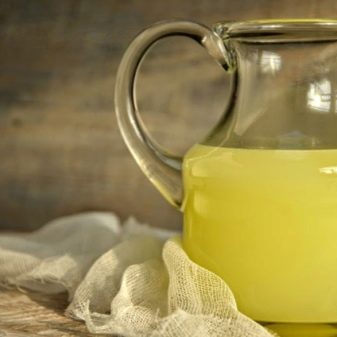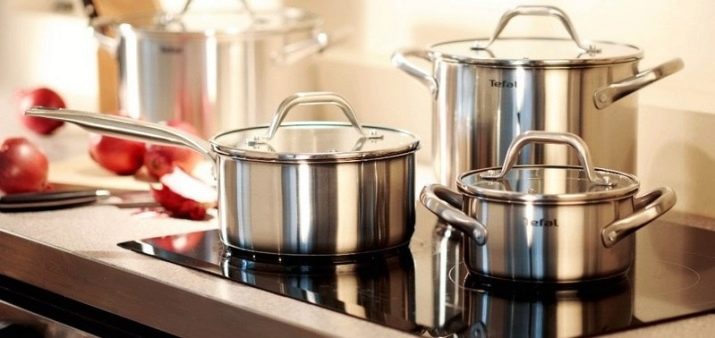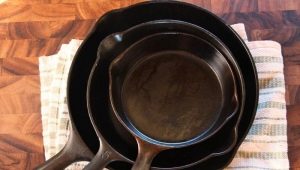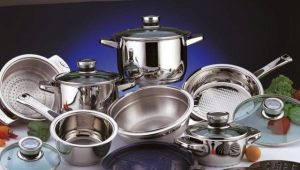How to wash a burnt stainless steel pot?
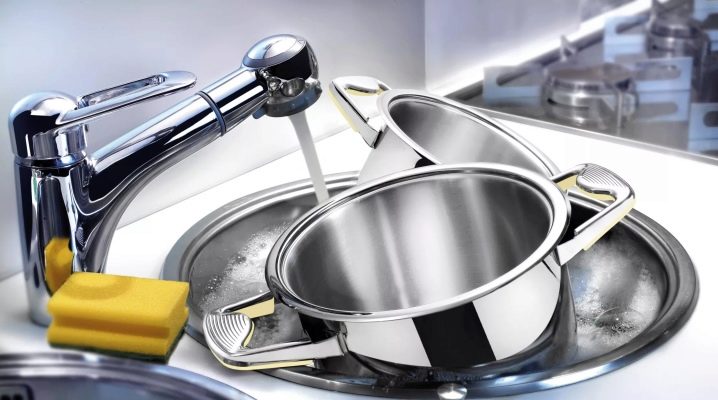
Stainless steel cookware is very popular, however, its quality and safety have a downside. Like any widely used thing, stainless pan is very easy to get dirty, and its pollution is very diverse. Most often, perhaps, there is such a serious "adversary", like soot, but you can also win it if you know how.
Features
Kitchenware made of stainless steel, always convenient, store it and care for it quite easily; not least, dishes cooked in it are invariably tasty and healthy. Special additives make stainless steel resistant to most adverse effects, such as harmful radiation, chemical corrosion, and even high temperature.
The key element of molecular protection (the thinnest film of oxides) is continuously updated, it itself maintains itself in good condition. The problem is that the burnt stainless steel pan should be cleaned as soon as possible, until the deposits of oils, fats and scale have not deteriorated its quality.
Competent cleaning always takes into account how contaminated the pan is, it is important in selecting both the optimal type of cleaning agent and its concentration, duration of treatment.
What to clean?
There are a number of simple and fairly effective options for cleaning steel utensils that not only remove dirt, but can even give the surface a shine and brilliance. Using both home and factory cleaning products, avoid hard brushes, especially metal ones, scrapers, never use sand and emery, otherwise the coating will be irreversibly scratched.
The main remedies suitable for such a case are acids and liquids with their presence, which are specially designed to clean the surfaces in the kitchen. Acid reacts even with fat and effectively removes it, no matter how long the stain stays on.
Speaking about the brands of drugs, it should be noted that "Chister" cheaper than all the others, however, its effectiveness is not too great. Therefore, if you are faced with any serious pollution, it is worth refusing from this means. "Bugs Shumanit" contains potent ingredients, cleans very well, the cost is moderate. Finally, Oven Cleaner It is more expensive than both, does not include hazardous substances and does not have a bad smell, it works quite well.
To get rid of carbon, you should apply any of these drugs to the steel, hold for 10 minutes and thoroughly rinse the dirty place with water. Do not forget that all industrial compounds require careful handling: use rubber gloves and follow all the precautions prescribed by the instructions. Work only in rooms with a decent level of ventilation, otherwise the risk will be too great!
Using "Whites" - also a good option, and affordable for financial reasons. A single tablespoon is enough to remove all the dirt from most pans (except the largest). The method of operation is simple: fill the dirty dishes with water, boil for ½ hour; to get rid of the remnants of the burn reliably helps to remove it with a sponge.
For reliability, the cleaned pan is additionally boiled in pure water to destroy the smell and residual deposits of “Whiteness”, which may be toxic.
If jam is burned in the pan, never scrape it with forks, knives and other sharp objects, it will inevitably leave scratches. Excellent help to eliminate the problem of special sprays for cleaning stoves and ovens.
For your information: such tools manifest themselves very well not only with steel, but also with enamelware. Since the preparations contain alkali, All manipulations are carried out only in rubber gloves, and economic, but not medical - they are not reliable enough.
The burnt bottom of the pan is cleaned using activated charcoal: several tablets are pounded and diluted with a small amount of water to create a kind of gruel. A half-hour passive treatment will then remove all carbon with a soft sponge or dishcloth.
Ways to clean at home
If there are no store medications and even the ability to buy them, you can still clean the pan, with available tools that help a lot. The simplest of them is table salt, which is used as follows:
- Fill the container with clean cold water and leave for a period of time.
- Water is poured, 2-4 tablespoons of salt are poured to the bottom.
- After waiting 120-180 minutes, an ordinary sponge removes all carbon deposits, this can be done without the slightest effort.
Be careful! Sometimes salt contact with stainless steel grades may cause dark spots and corrosion, since the protective layer is broken.
An alternative, and completely safe for the metal, is the use of vinegar, it removes carbon deposits both inside and outside equally effectively, quickly. The simplest technique is that the pan is simply filled with undiluted acetic acid for a couple of hours, after which the liquid is poured out, and the dishes are thoroughly washed with the usual means. It is possible to enhance the activity of the drug by pouring a small amount (about 50 g) of vinegar into the water, in which ½ standard piece of laundry soap is pre-dissolved. The pot will have to boil for 30 minutes to an hour, depending on how badly it is burned.
Please note that such boiling creates a mass of toxic fumes and you need to work under the hood or with windows open continuously. And even in this case, to be in the kitchen during this procedure is not recommended.
Even extremely strong contamination helps wipe off citric acid, it copes with limescale. First, boil the water (pouring it so that the cinder is guaranteed to be blocked, but not higher). 60 g of powder are added to boiling boiling water and the gas is not reduced in the nearest ¼ hour; if the spot is very low or at the bottom, make sure that all the water does not boil, add more if necessary. Finish cleaning by draining the liquid and removing the remaining dirt with a sponge. And if you wet the sponge in the same acid, you can easily remove the burned places and from the bottom.
Soap is an excellent tool to help clean up any dirt, no matter how it is launched. In simple cases, take a liquid, but if the spot is very large, eaten or left with milk, fat, it is recommended to use the economic. Hot water is poured into the pot, add a certain amount of soap solution and mix until complete homogeneity. The mixture should be boiled and left to boil for up to 20 minutes. The final procedure, as always, is cleaning with a sponge.
It so happens that such efforts lead to nothing. The solution of the problem is to dissolve 1/3 of the rubbed piece of soap in 4 liters of boiling water, add 30 g of PVA glue and boil the mixture of these reagents for at least 30 minutes.
Strongly rooted baking soda. Dirty dishes are placed in a deeper container where soda solution is poured (1 standard pack of 5 or 6 liters of pure water). The edge of the liquid should be 20-30 mm above the cleaned pan. Large capacity will be a device for a water bath for 120 minutes; Then cool the pan and rinse with water to remove residual dirt and soda.
A non-standard home remedy that helps bring the dishes to shine no worse than the listed options is whey. She poured the bottom of the burnt container, covering spots of soot for 10-20 mm, kept in this form day. The pot from which this solution is poured will be completely clean after washing in clean, warm water with a sponge.
Useful tips
- We recommend cleaning stainless steel dishes more often, and after each boiling, extinguishing inspect it immediately for stains. Do not rely on the usual washing and even on the use of dishwashing detergents, be sure to check whether it was possible to remove dirt or not. All stainless dishes (and pots are not an exception) do not tolerate washing in the dishwasher. Even when the instruction directly allows you to do this, take your time to rejoice in the deliverance from household chores.
- It doesn’t matter if you are fighting stains or just washing off food debris - do not forget to wipe the pan dry with a clean cloth. When it dries in an open area and even in a drying cabinet, there is a risk of new stains. To ensure that the top layer is always clean, smooth and smooth, it is recommended to scrub the dirt to a point, rather than driving a rag in a circle. Raw potatoes help to make the table shiny: rub the metal with the open sides of its slices, and then it will definitely sparkle under the sun or electric rays.
- From the "folk" means excellent assistance in cleaning steel pots has coffee grounds. It is collected on the surface of the foam sponge and scrub all dirty places. The same composition helps to bring cleanliness and on cutlery, on bowls.
- A formidable opponent of cleanliness in the kitchen is milk; The already mentioned “Whiteness” helps to cope with the stains left by it. If you do not want to risk, just fill in the burned spots with boiling water, add a fair amount of soda and leave for 8-12 hours. After such treatment, the stains will most likely be destroyed, and all you have to do is just to remove them mechanically. If, as a result of cleaning with table salt or other means, the steel has darkened, you need to boil water in it for an ½ hour with the onion head cut into slices, then the appearance will return to normal. The same method helps to eliminate carbon deposits and raids that appear during normal use.
- If you have on hand "Coca Cola" or another fizzy drink, boiling it (about 20 minutes) can remove nagar stains just as well as proprietary store stocks. Remember: any bulk product, whether industrial or domestic, pour carefully, it should not go anywhere except in polluted places!
Never wash heated steel dishes, it must be allowed to cool; hurrying, you can ruin the valuable kitchen utensils irrevocably.
If it seems that the stainless pan has faded after washing, faded, wipe it with a soft cloth soaked in vinegar, and the result will not take long to wait.
For information on how to clean a burnt stainless steel pot, see the next video.
